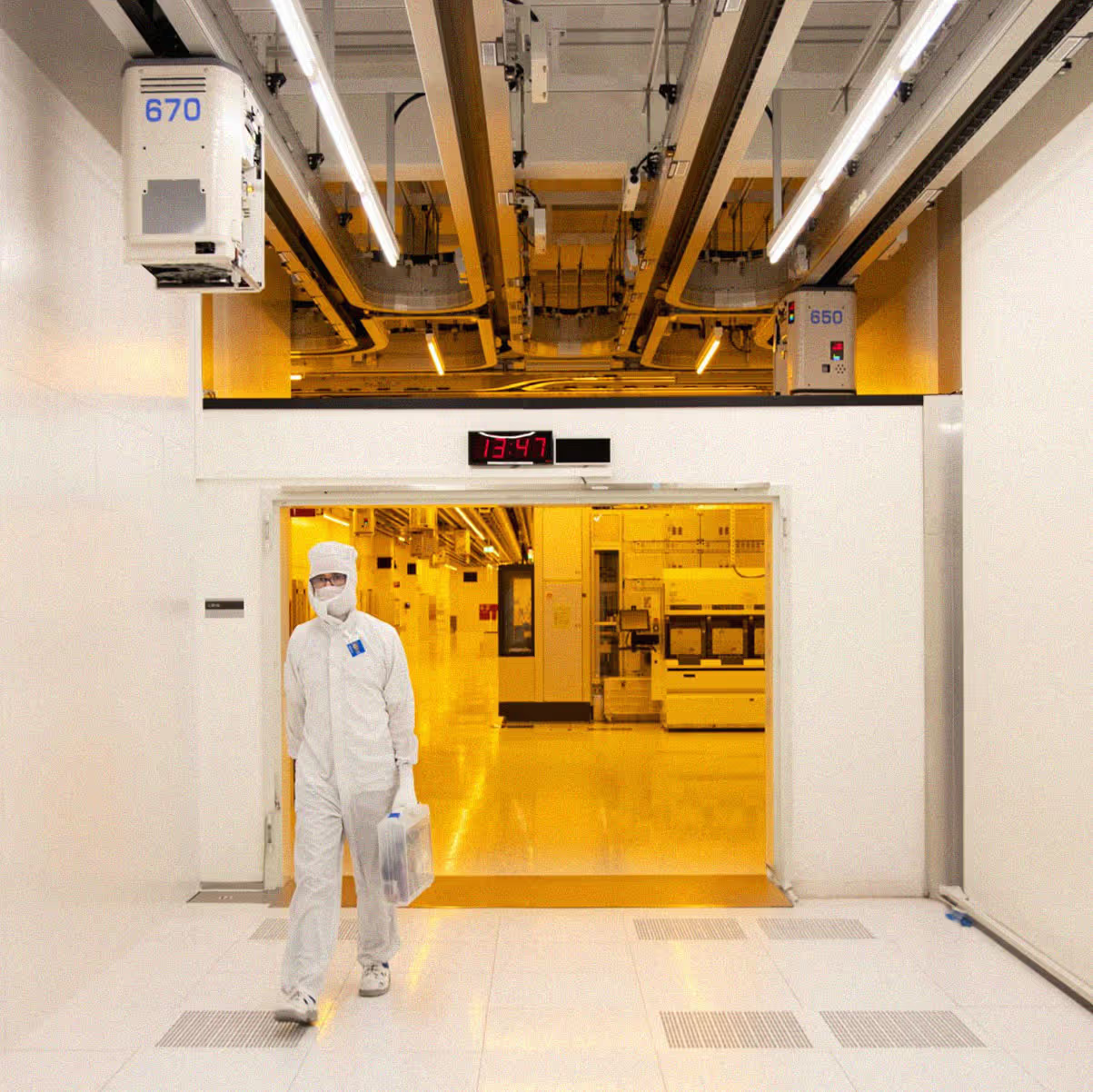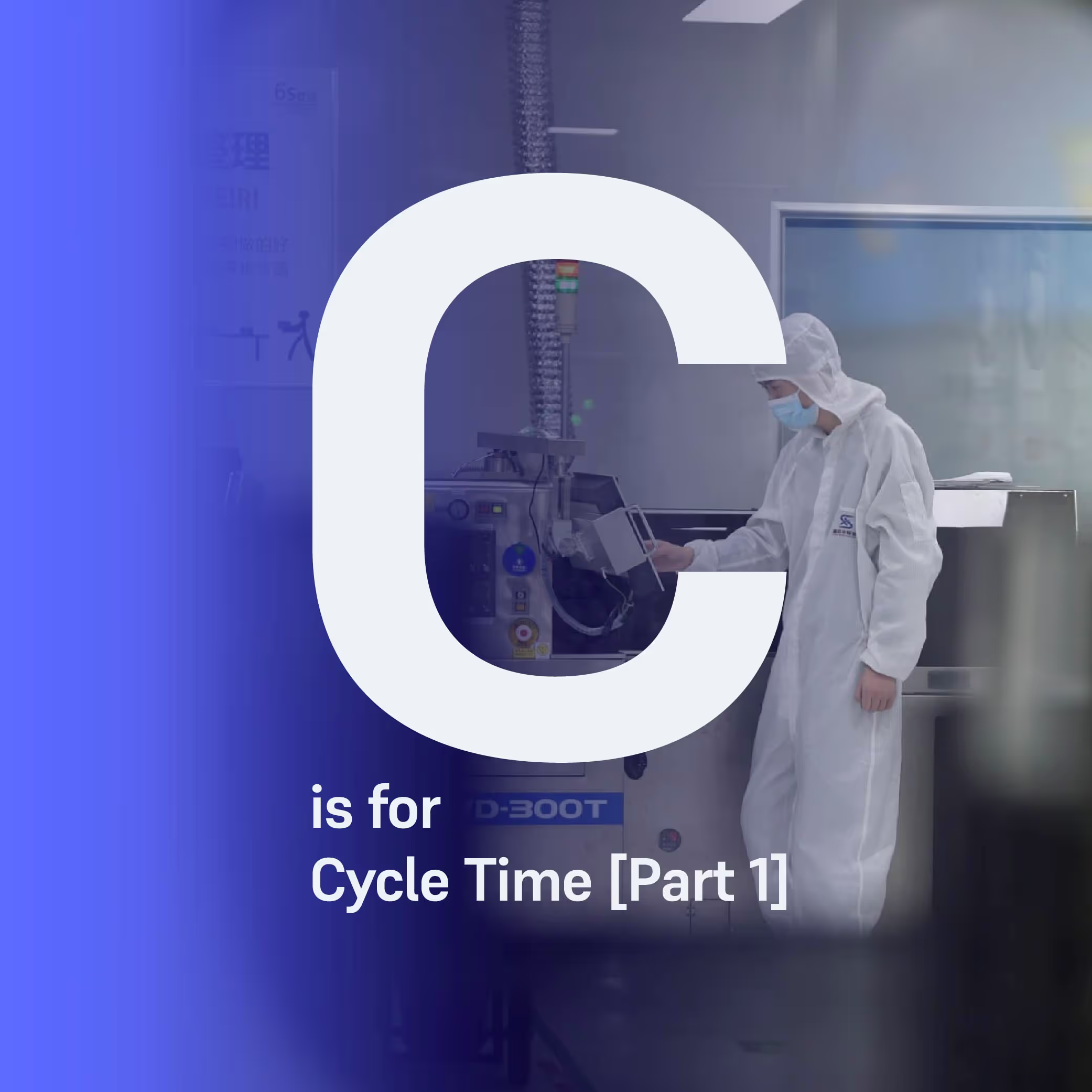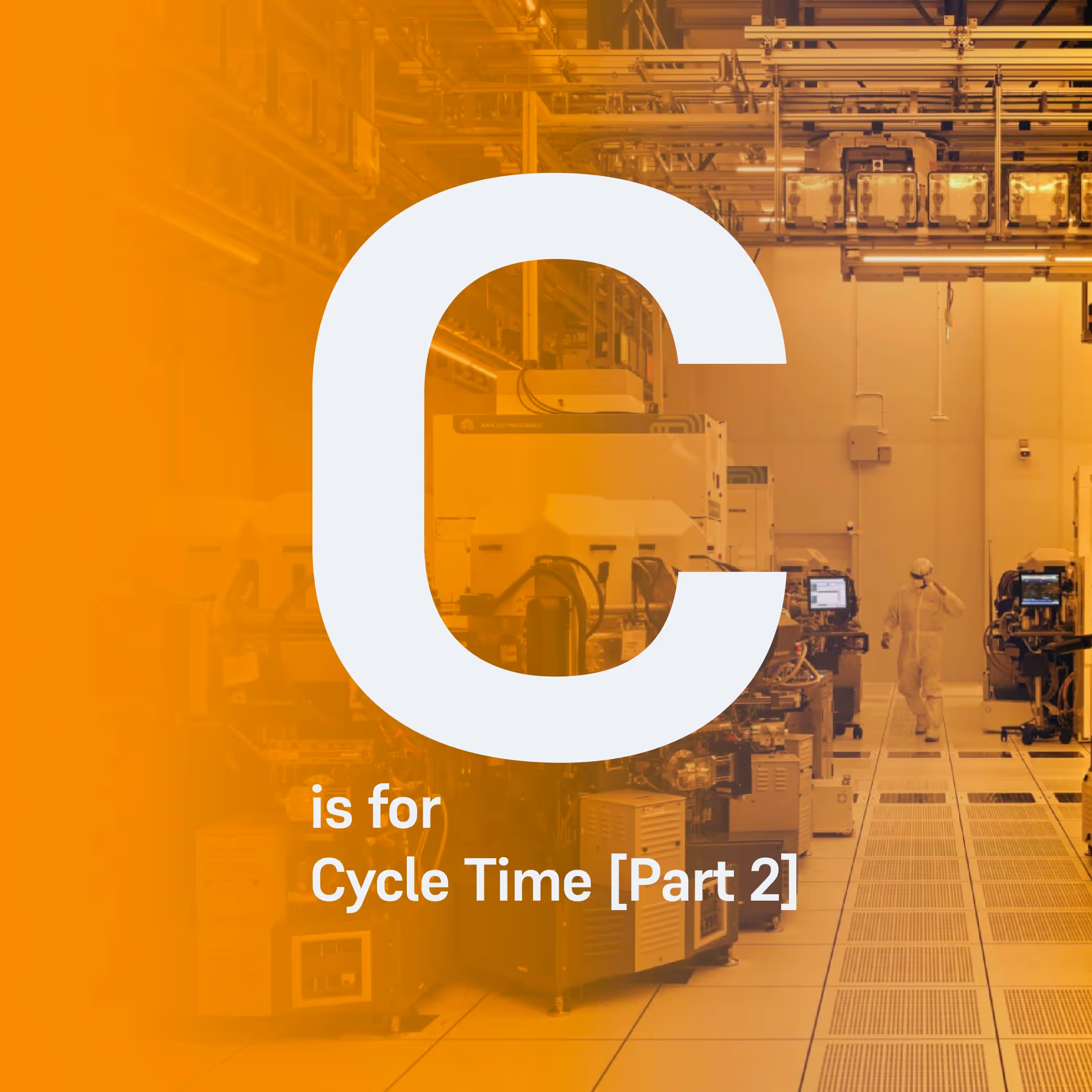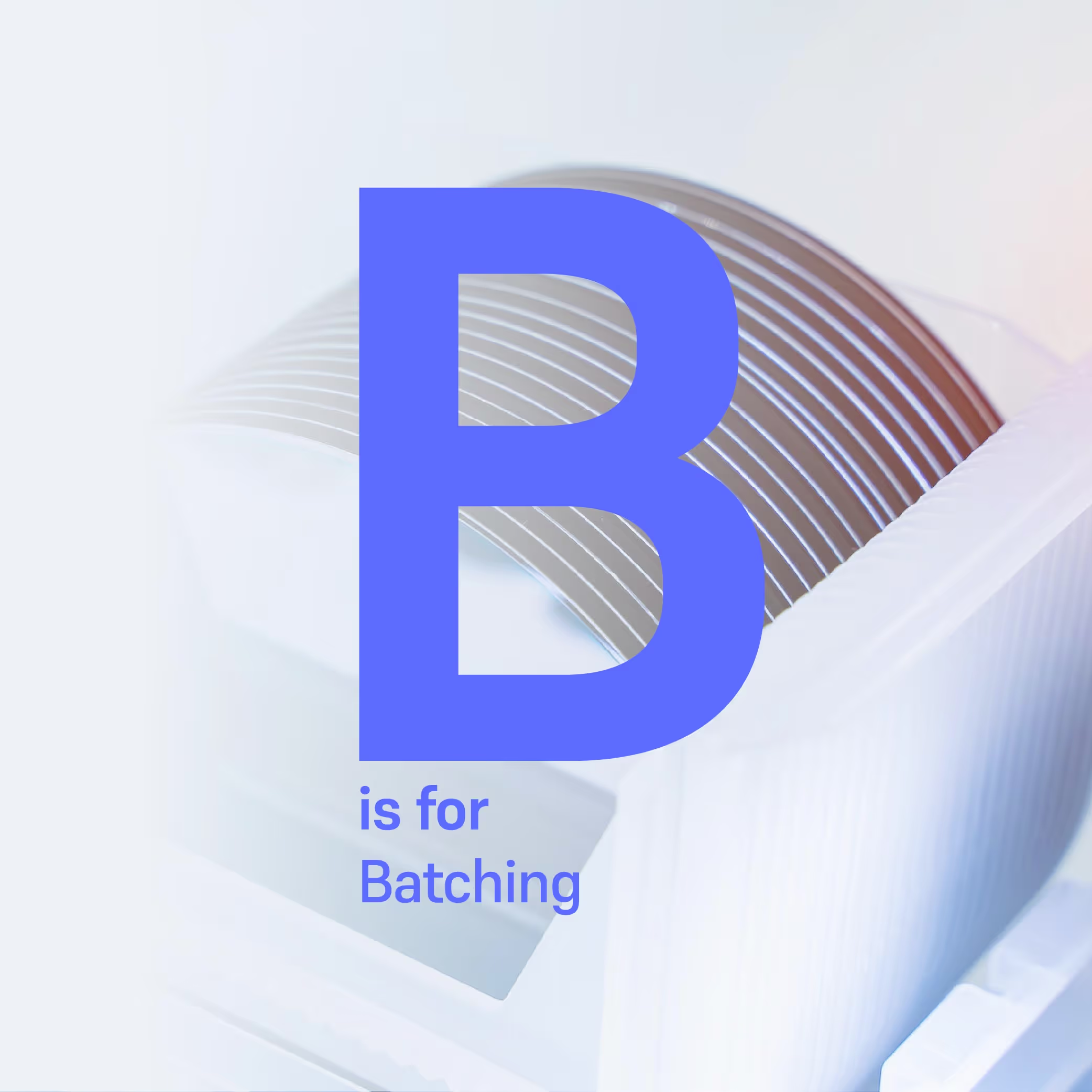Understanding the Trade-offs in Preventative Maintenance for an Optimized Fab Performance
The tools used in a fabrication process are extremely sophisticated; requiring an extensive preventive maintenance regime to ensure reliable production. A big challenge faced by fab managers is getting in place optimal scheduling of preventative maintenance whilst still meeting their production KPIs.
In the constant pursuit of improved efficiency in semiconductor wafer fabs, the reliability of equipment is essential. The tools used in a fabrication process are extremely sophisticated; requiring an extensive preventive maintenance regime to ensure reliable production. A big challenge faced by fab managers is getting in place optimal scheduling of preventative maintenance whilst still meeting their production KPIs. Simply because such scheduling is extremely complex, involving many trade-offs as well as being time-consuming. What’s more, the exact impact on productive output is difficult to quantify.
Typically, to handle this complex problem, a fab may develop statistical models that try to predict unexpected tool downs. Such preventive maintenance – based on a pre-determined frequency – can help to minimise unexpected disruptions.
However, determining optimal maintenance frequencies is not an easy task, requiring answers to numerous questions and trade-offs that impact the eventual ability of a fab to meet its KPIs. Such questions include:
- How do different frequencies in maintenance impact the fab’s ability to meet on-time-delivery?
- How does one decide which tools to take offline at a single time, to minimise the disruption to the fab overall?
- Is it possible to forecast whether taking one arrangement of tools offline will lead to a 4% drop in throughput for the day? Whereas an alternative arrangement may only yield a 2% drop?
- What is the impact of taking those same tools down at 7 am tomorrow as opposed to 5 pm two days from now?
- What if – due to personnel requirements - you need all maintenance to take place at the same time? Alternatively, can they be staggered in 10-minute intervals for the same reason?
Fulfilling your KPIs
But what happens if it was possible to use your KPIs as basis to optimize maintenance scheduling? Instead of using a simple rule-based predictive model, such scheduling weighs constraints and finds the optimal schedule that will enable you to meet your KPIs.
Flexciton's scheduling technology addresses all such questions by finding the optimal schedule for your fab in any variety of forecasted conditions.
A ‘what-if’ scenario capability allows fab managers to effortlessly trial new preventative maintenance plans based on a variety of trade-offs or constraints. In addition, rather than dictate the time that tools must be taken offline, our optimizer will ensure all KPIs are achieved as best as possible, given the constraints.
By doing so, it prescribes the optimal maintenance schedule for the factory. All the fab manager has to do is to decide on suitable windows of time for each of the tools to be taken down.
Smart scheduling technology in practice
Let’s see what happens in three scenarios where we apply Flexciton’s maintenance scheduling capabilities with varying degrees of scheduling complexity. The scenarios are structured as follows:
- The status quo — In the first case, we optimize a production schedule, with fixed maintenance timings prescribed to all start at the same time for a given toolset. Production is scheduled using a heuristic-based dispatch system emulating that found in many fabs.
- Optimizing production around fixed maintenance — We use Flexciton’s advanced optimizer to perform the production scheduling.
- Simultaneously optimizing production and maintenance — Finally, we allow the Flexciton advanced optimizer to schedule both production and maintenance timings. The window to flex the maintenance timings is chosen to be a 90-minute addition to the original timing provided in Case 1.
The Gantt chart below (Figure 1) shows a snapshot of 300 lots scheduled in small toolsets over the course of twelve hours. Each lot can only go to a certain number of tools within that toolset, where the toolset is identifiable by the tool’s prefix. Each lot is assigned a priority. We optimize for the total cycle time of the lots, weighted by their priority. The maintenance periods (shown in striped orange) are of varying duration and are randomly assigned to tools to take place at a specific fixed time somewhere in the twelve-hour schedule.
In Case 1, we compare the logic of scheduling, given these fixed maintenance timings, with a heuristic dispatcher against Flexciton.
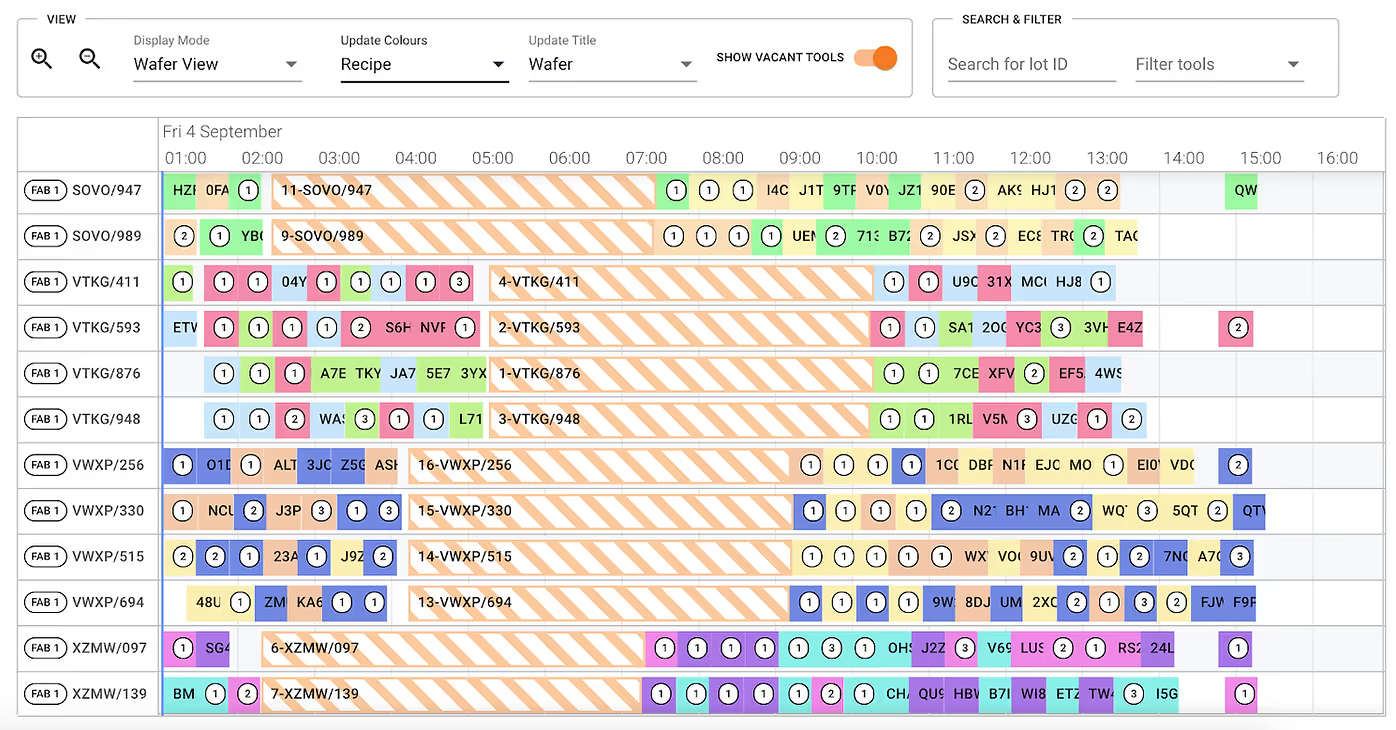
Here we can see that on the ‘XZMW/097’ tool, the dispatch system struggled to ‘look ahead’ and dispatch effectively, when given obstacles such as upcoming downtime just after 02:00. It would be better to, in the meantime, dispatch a short processing lot. An even more ideal schedule can flexibly move downtime around to maintain consistent, predictable throughput across the schedule.
So, what if the scheduler is allowed to prescribe the timings that it finds optimal? The following Gantt chart is from Case 3, where the optimizer is free to plan the maintenance at any time within a 90-minute window.
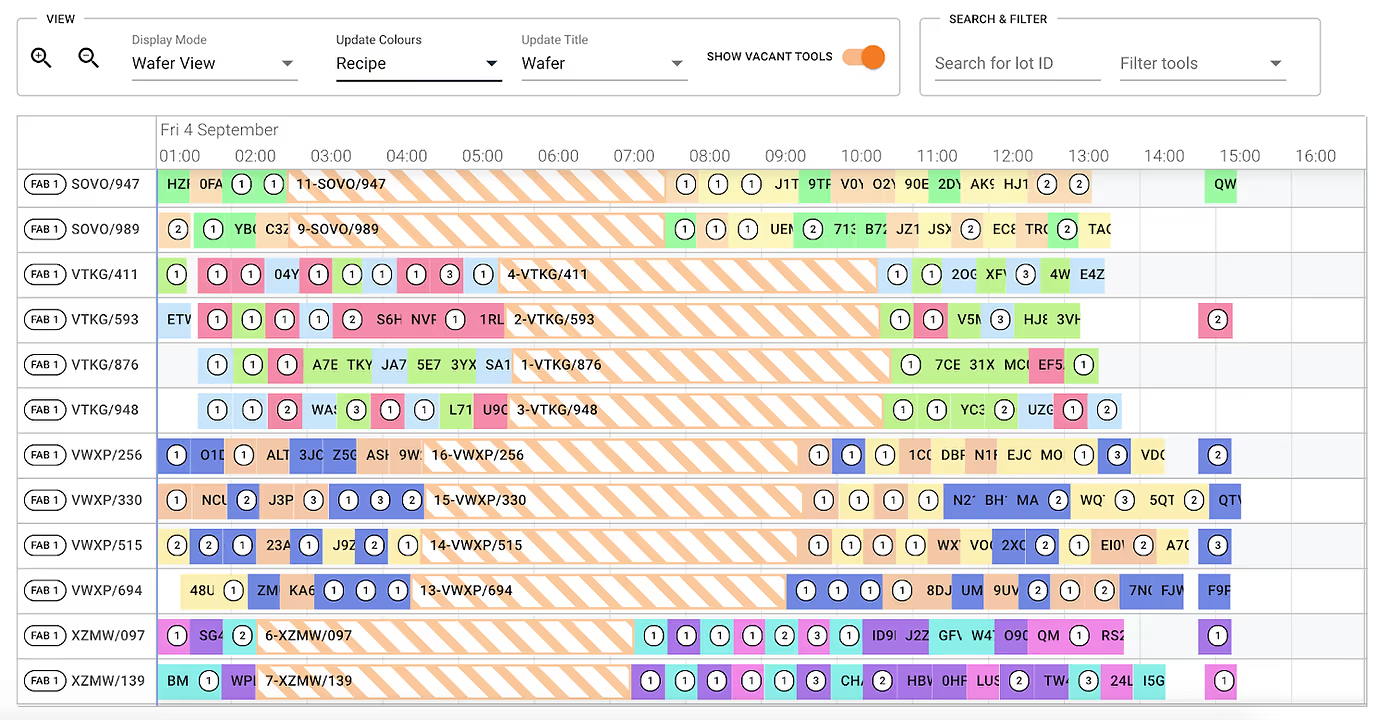
The benefits of a flexible maintenance approach
To get a quick understanding of the results achieved using the three scenarios, we use queue time as our KPI. In the table below, you can see that the flexible maintenance approach greatly outperforms a simple dispatch heuristic. Obviously, queue time is a one-dimensional constraint of which there are infinitely more in a fab process that need to be considered. It is here that our maintenance optimization solution offers fabs unique capabilities: weighing all possible constraints to ensure KPIs are met to the fullest.
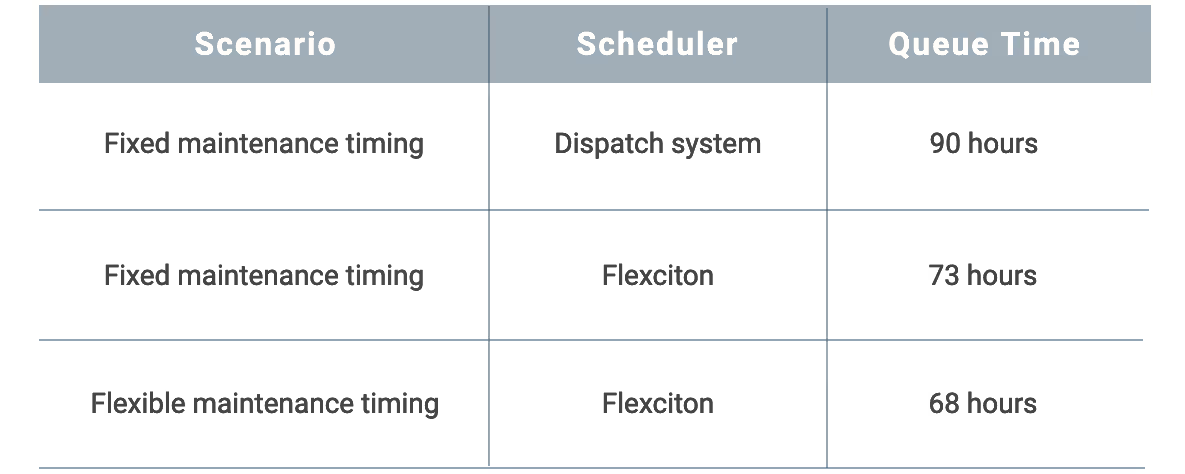
So instead of letting predictive maintenance schedules drive production, why not let the driver of maintenance planning be your fab's top-line production KPIs? The Flexciton optimizer allows easy scenario testing and exploration in order to effectively quantify the impact that maintenance has on the production schedule.
Flexciton’s solution enables fab managers to consider multidimensional trade-offs simultaneously. The alternative to such informed decision-making is that fabs schedule their maintenance ‘blind’. They will ultimately pay the price through unpredictable cycle time, unsatisfactory throughput and unnecessary tool downtime. By switching over to smart scheduling, it is much easier to get an accurate prediction of the impact that modifying a downtime schedule will have in terms of meeting top-level KPIs. Learn more about smart scheduling by downloading our white paper, "Superior Scheduling: hybrid approach boosts margin"
More resources
Stay up to date with our latest publications.





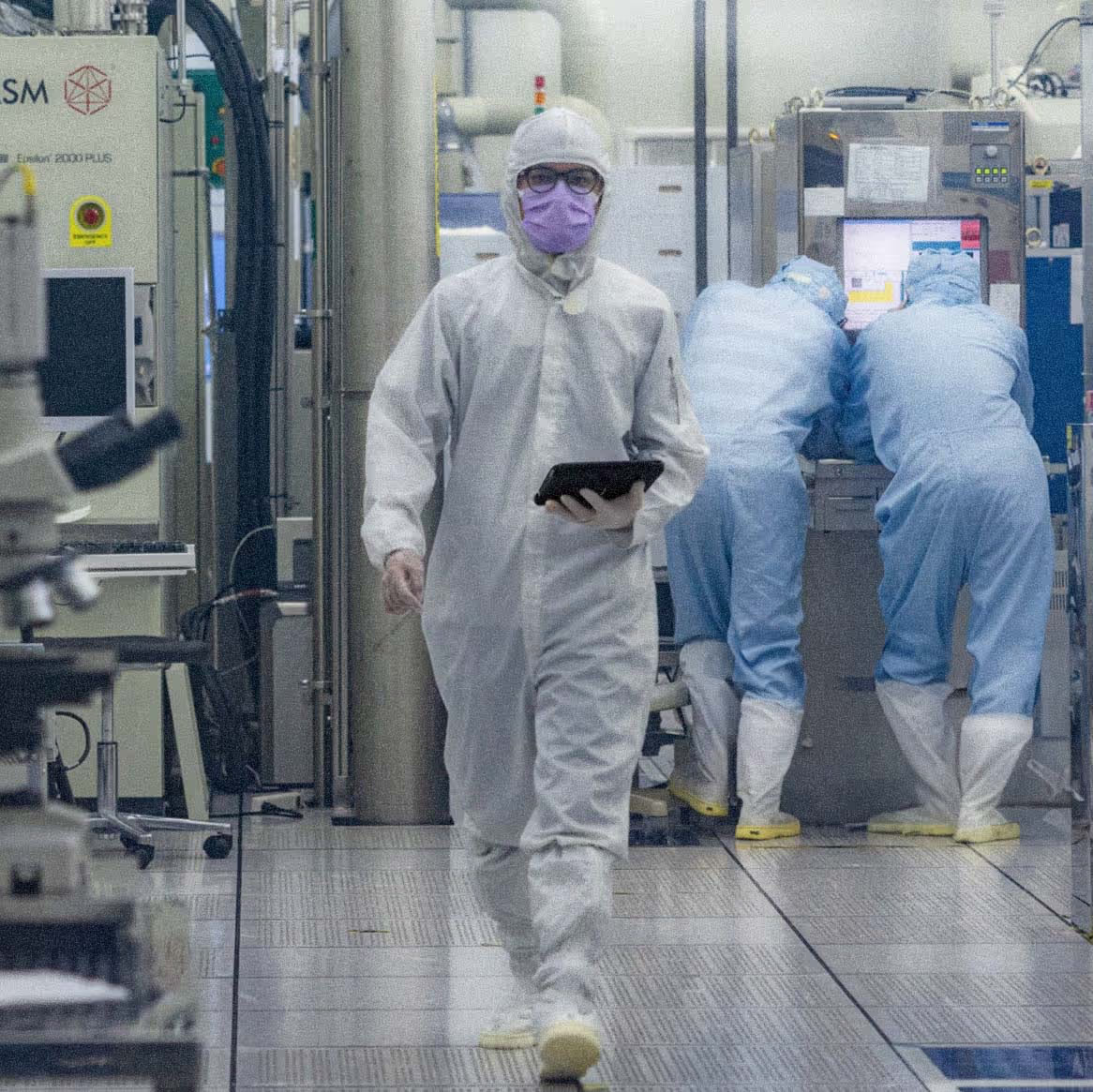

.avif)
.avif)
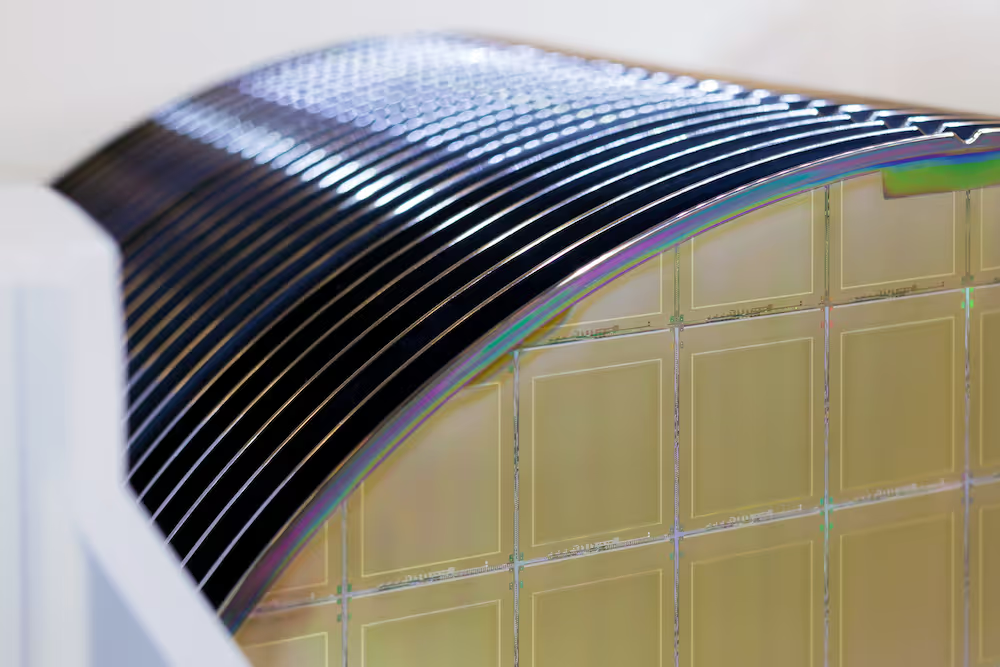















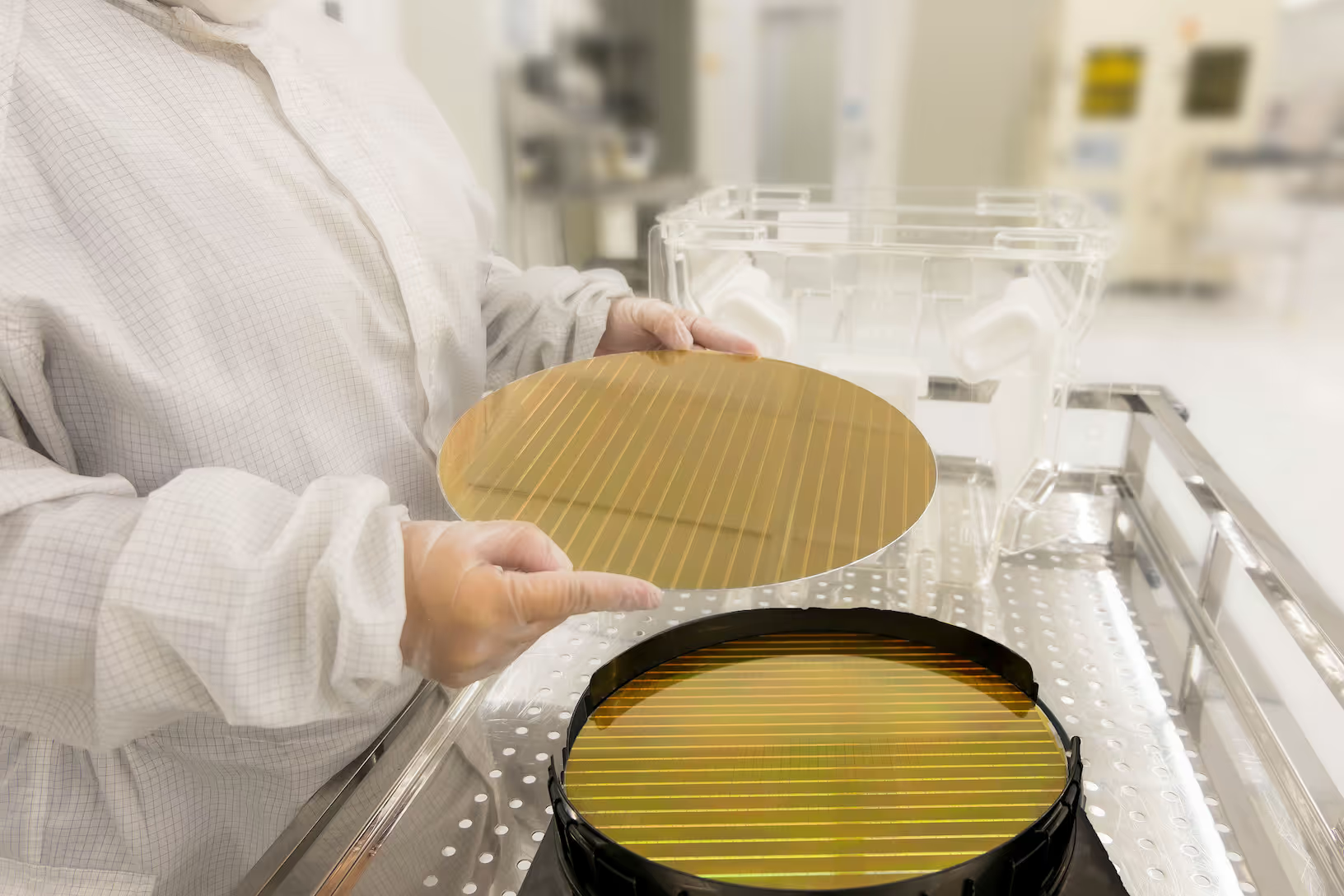










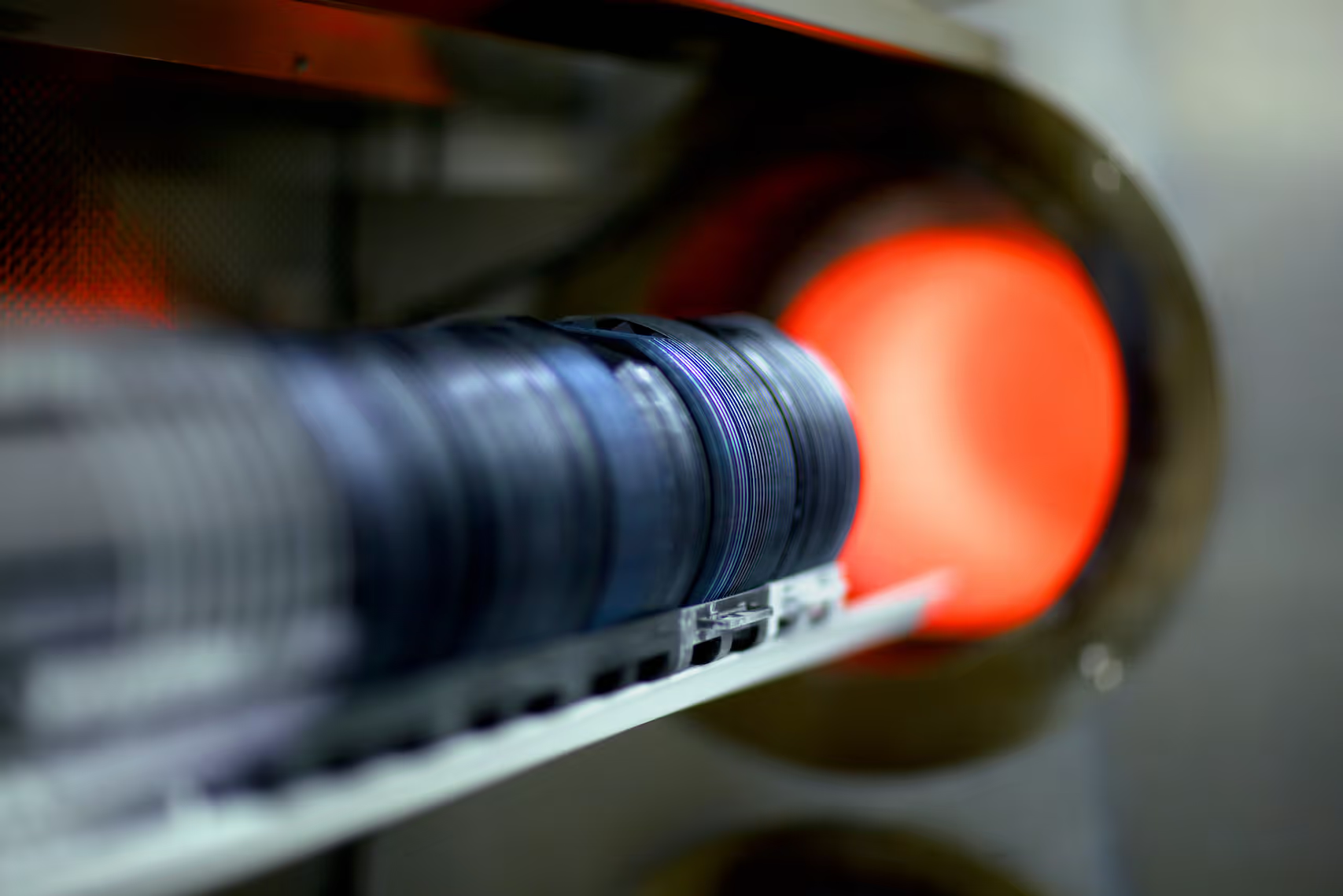





.avif)






